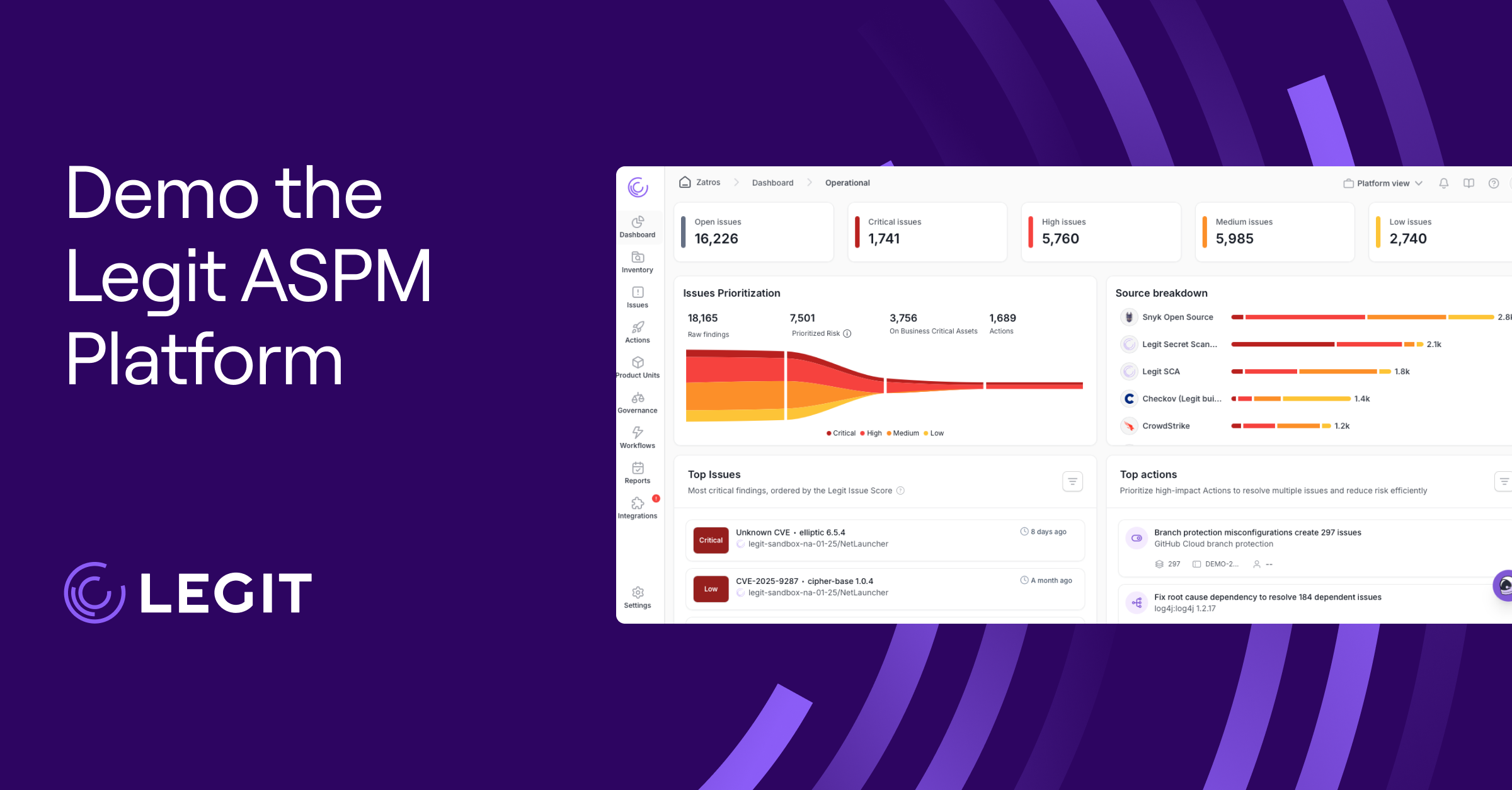The faster teams build applications, the easier it can become for vulnerabilities to slip through the cracks. Your security tools have to keep up while maintaining accuracy. They must help you identify what’s exploitable before it becomes a problem.
That’s why more teams are turning to interactive application security testing (IAST) tools. This type of testing delves deeper into your code and catches issues in real time, without holding back development. Let’s explore how these tools work, what types are available, and which is the best fit for your projects.
What Is IAST, and How Does It Work?
IAST is security testing that happens while an application is actively running. Instead of scanning source code in isolation or looking at a finished product from the outside, interactive application security testing tools sit inside the app during runtime and watch how data moves through. This lets them catch issues immediately as code executes, whether through automated tests or just regular use.
IAST security testing pinpoints the exact lines of code causing problems, tracks how data flows through the system, and provides context that makes it easier for your team to find solutions. This typically works by injecting lightweight sensors into the application via source code instrumentation, or by attaching to the runtime environment.
IAST fits naturally into application security testing programs because it’s fast, precise, and built to scale with modern development. And unlike older methods, it rarely floods your dashboard with false positives.
IAST vs. DAST
Dynamic application security testing (DAST) works like a black-box scanner. It tests an application from the outside in, sending payloads and watching how the app responds. It doesn’t see what’s happening under the hood, which limits accuracy and context. You’ll know something’s wrong, but not exactly where or why.
In contrast, IAST is a gray-box approach that runs inside the app during use. It observes code execution, data flow, and configuration settings on demand, so it can flag vulnerabilities with precise context. DAST often requires expert tuning and can take days to run, while IAST delivers results instantly as part of your CI/CD pipeline.
IAST vs. SAST
Static application security testing (SAST) takes a white-box approach, using automated tools to scan code in a non-runtime environment and spot risky patterns early. It’s useful, but it can be noisy and can't see how code behaves once it’s running.
IAST operates inside the application in real time, which strengthens security by tying findings to actual execution paths and data flows. For most teams, that means pairing SAST for early code analysis with IAST for runtime validation, giving you coverage across the full software development lifecycle (SDLC) without drowning in noise.
IAST Tools: 3 Common Types
Not every IAST security solution works the same way. Most fall into one of three categories—passive, active, and “true” IAST—each with its own balance of coverage and performance impact.
Passive IAST
Passive IAST tools monitor applications while they run, but don’t generate their own test traffic. They rely on existing functional or QA tests to expose vulnerabilities. The upside is low overhead, since they don’t add much extra load. But the downside is that coverage depends entirely on how thorough your test cases are.
Active IAST
Active IAST goes a step further by injecting its own test traffic into the application. This method validates vulnerabilities more aggressively and often finds issues that passive tools miss. The tradeoff is a higher performance impact during testing.
True IAST
True IAST combines the strengths of both passive and active approaches. These tools can observe applications under normal use, while introducing their own test cases to validate findings. The result is broader coverage, fewer false positives, and live insights that scale across complex environments.
Find out how we are helping enterprises like yours secure AI-generated code.

5 Examples of IAST Security Tools
The IAST market has grown quickly, and there are plenty of options aimed at different needs, like developer-first scanning versus enterprise-scale runtime protection. Here are five application security tools worth considering.
1. Invicti
Invicti combines DAST and IAST into one platform, and takes an active IAST approach. Its proof-based scanning feature verifies whether a vulnerability is actually exploitable, cutting down on false positives.
The built-in Shark IAST sensor runs inside applications to map pages, including hidden or unlinked ones, and ties issues back to the exact files and lines of code. Invicti also integrates with major CI/CD systems and issue trackers, making it easier to fold vulnerability findings into existing workflows.
2. Acunetix
Acunetix is best known as a fast, lightweight scanner, but with its AcuSensor component it shifts into IAST mode. Functionally, it behaves more like a passive IAST tool, relying on existing test traffic, but it enhances coverage by providing code-level visibility.
This solution can scan web apps and APIs (REST, SOAP, and GraphQL) while pointing developers to the precise code location of vulnerabilities. Acunetix also supports full directory scanning, essential for testing on hidden files, and it integrates with CI/CD platforms.
3. Aikido
Aikido takes an all-in-one approach, unifying IAST, SAST, and software composition analysis (SCA) into a single dashboard. Positioned as a true IAST solution, it combines passive observation with active validation, reducing false positives while broadening coverage.
Along with spotting common application vulnerabilities, like SQL injection and cross-site scripting (XSS), Aikido offers AI Autofix for one-click remediation and monitors for exposed secrets in your codebase.
4. Contrast
Contrast Security Assess embeds directly into running applications to provide continuous monitoring and real-time detection. Often considered a true IAST platform, it blends runtime observation with active checks to give developers accurate results.
This tool also includes runtime application self-protection (RASP) features that go beyond detection, to block potential threats as they happen.
5. Black Duck
Black Duck Seeker focuses on compliance visibility and runtime validation, making it an active IAST tool. It integrates with CI/CD pipelines to verify vulnerabilities in real time, cutting down on false positives.
One of its features is sensitive data tracking. This shows how regulated information, such as payment data or personal records, moves through an application. It also detects whether developers store that information in cleartext, making it easier to stay aligned with standards such as PCI DSS or GDPR.
How to Choose the Right Tool for Your Business
Picking the right IAST tool requires looking past flashy features and focusing on what will actually work for your team. Here are the most important considerations:
- Comprehensive reporting: Look for solutions that deliver clear, code-level details along with compliance mapping. This makes it easier to track trends through application security metrics and prove progress to stakeholders.
- Smooth DevSecOps integrations: Your IAST solution should plug into your CI/CD pipeline, IDE environments like Visual Studio, and ticketing systems. The goal is real-time feedback during normal development, not another silo that slows processes down.
- Intuitive dashboard: If reports are buried in a clunky UI, you likely won’t act on them. A clean dashboard with clear prioritization keeps fixes moving.
- Low false positives: The best IAST tools validate issues in runtime, and show you exactly where they occur in the code and data flow. As a result, your team can focus on confirmed vulnerabilities instead of chasing ghosts.
- Scalability and support: As your app portfolio grows, you’ll need a tool that can keep up. Vendor support and flexible deployment options make the difference between a smooth rollout and constant headaches.
Boost IAST With Legit Security
IAST identifies vulnerabilities while an app is running, but it only shows part of the picture. Legit Security extends that protection by embedding security across the entire delivery process—from source code repositories and build systems to CI/CD pipelines. That means risks are surfaced earlier and tracked throughout the development lifecycle.
By combining runtime insights from IAST with the broader guardrails of an application security posture management (ASPM) platform, you can secure the entire SDLC. Legit ties its findings back to the responsible teams, tools, and environments, giving you more context and greater accountability.
The result is end-to-end coverage. Developers get actionable fixes and security teams gain visibility, facilitating measurable improvements without slowing innovation. Request a demo today to see the difference for yourself.
Download our new whitepaper.

